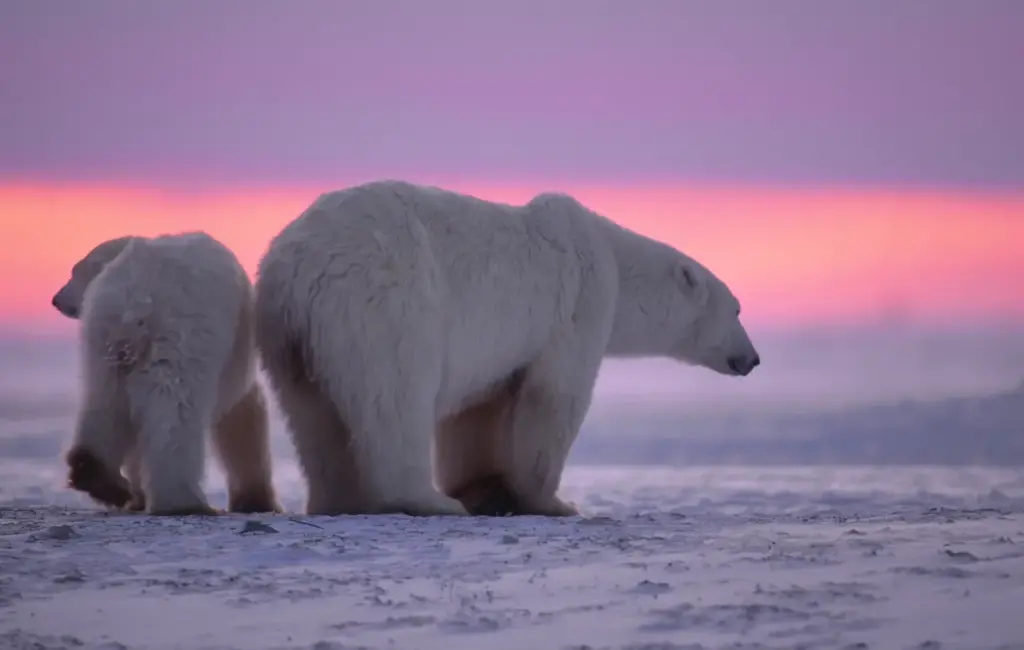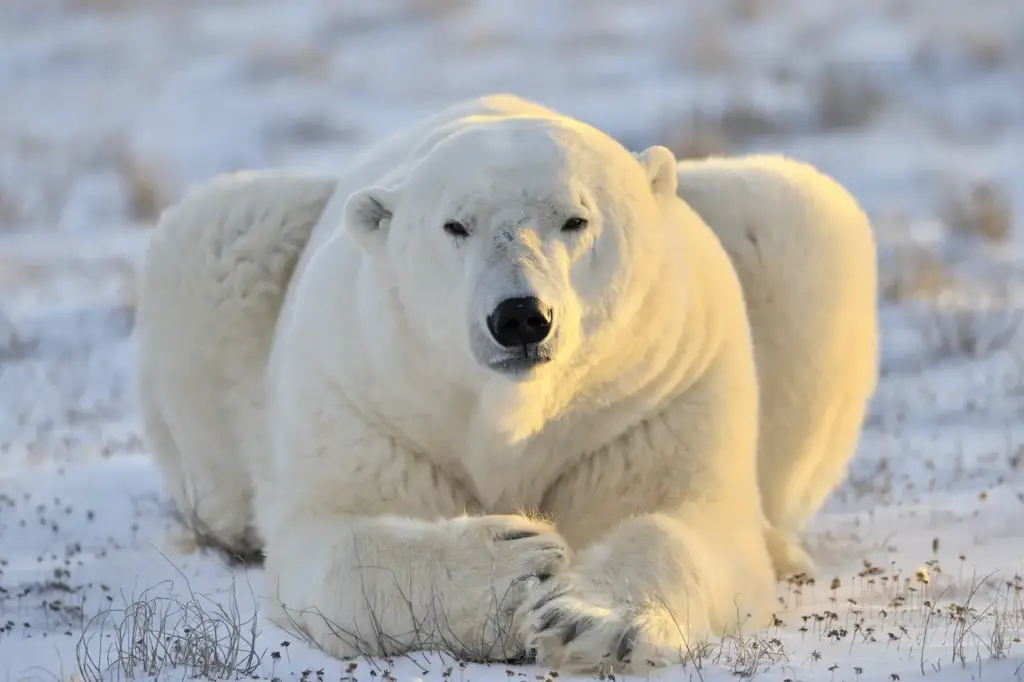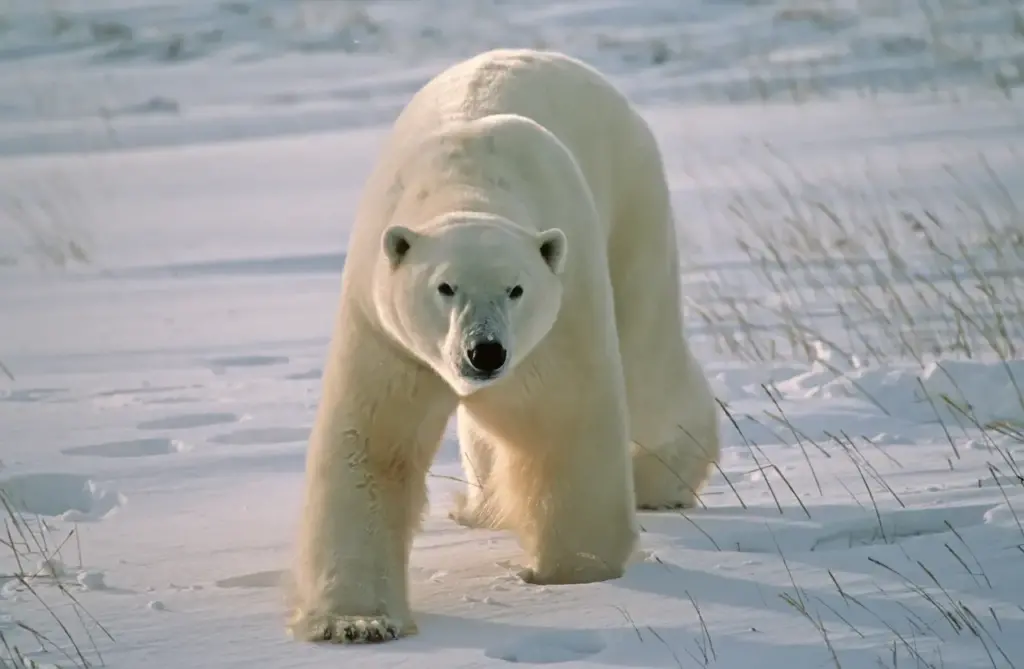What Eats A Polar Bear?
Categories
- Accipitridae (1)
- Acrididae (1)
- Algae (2)
- Alligatoridae (1)
- Amoebidae (1)
- Amphibians (3)
- Anatidae (1)
- Anguillidae (1)
- Arachnids (2)
- Bears (2)
- Big Cats (3)
- Birds (13)
- Bovidae (5)
- Bufonidae (1)
- Camelids (1)
- Cameras (1)
- Canines (13)
- Caridea (1)
- Carnivora (10)
- Castoridae (1)
- Cats (5)
- Cebidae (1)
- Cephalopod (1)
- Cervidae (2)
- Cetacean (1)
- Chondrichthyes (1)
- Crocodilia (2)
- Crustaceans (4)
- Culicidae (1)
- Cyaneidae (1)
- Dasypodidae (1)
- Dasyurids (1)
- Deer (1)
- Delphinidae (1)
- Desktop (1)
- Didelphidae (1)
- Dinosaurs (1)
- Dogs (13)
- Dolphins (2)
- Echinoderms (1)
- Education (10)
- Elephantidae (1)
- Equine (1)
- Erethizontidae (1)
- Erinaceidae (1)
- Farming (1)
- Felidae (5)
- Fish (5)
- Food Chain (31)
- Food Web (2)
- Formicidae (1)
- Frugivore (1)
- Gaming (1)
- Gastropods (1)
- Giraffids (1)
- Great Apes (2)
- Health Conditions (3)
- Herbivore (4)
- Hi-Fi (1)
- Hippopotamidae (1)
- Hominidae (1)
- Insects (10)
- Invertebrates (2)
- Keyboards (1)
- Laptops (1)
- Leporidae (1)
- Mammals (23)
- Marsupials (4)
- Mephitidae (1)
- Microchiroptera (1)
- Mollusks (2)
- Mongoose (1)
- Muridae (1)
- Nocturnal Animals (1)
- Odobenidae (1)
- Omnivore (2)
- Phasianidae (1)
- Phocidae (1)
- Plankton (1)
- Plants (2)
- Primate (1)
- Ranidae (1)
- Reptiles (7)
- Rhinocerotidae (1)
- Rodents (5)
- Salamandridae (1)
- Scarabaeidae (1)
- Sciuridae (2)
- Sharks (1)
- Shellfish (1)
- Sound (1)
- Spheniscidae (1)
- Suidae (1)
- Superfamily Papilionoidea (1)
- Theraphosidae (1)
- What Eats (5)
Polar bears are the largest land carnivores in the world. An adult male can weigh over 1500 pounds. With their massive size and predatory nature, it may seem like polar bears have no natural enemies.
However, there are a few animals that occasionally prey on polar bears. In this article, we’ll take a deep dive into what eats polar bears and what their typical diet consists of.
What Eats Polar Bears? Natural Predators of Polar Bears
Polar bears are apex predators in their Arctic habitat. Their enormous size and strength make them a formidable force that few animals want to recklessly engage. However, polar bears are sometimes preyed upon by the following natural predators:
Table of Contents
ToggleKiller Whales / Orcas
Killer whales or orcas as commonly referred to are highly intelligent and efficient predators that hunt in groups called pods. They have been known to attack young, injured, or isolated polar bears swimming between ice flows.
Killer whales will try to tip the bear into the water and drown it before feeding on the carcass. They are not deterred by the bear’s size and strength when working as a coordinated pack. As climate change opens up more northern waters, killer whales may increasingly overlap with polar bears and prey on them more frequently.
Walruses
Walruses and polar bears occasionally compete for food sources and territory. There are rare reports of large male walruses killing bears, particularly younger ones if provoked. The walrus can use its long tusks to impale or gore a polar bear during conflicts over prey or turf.
As walrus populations decline due to less Arctic ice, these interactions may become more common as the species fight over the same limited resources.
Other Polar Bears
Adult male polar bears may attack and kill young cubs to mate with the mother. Starving male bears may also prey on weaker members of their species.
There are instances of large males cannibalizing smaller polar bears for sustenance when food is scarce. As climate change reduces sea ice hunting grounds, polar bear cannibalism events are likely to increase due to nutritional stress.
Humans
As polar bears come into increased contact with humans due to climate change, bears that threaten people or enter settlements are sometimes killed in self-defense or preemptively relocated or euthanized.
This source of mortality can displace natural predation rates. More hungry bears drawn inland by lack of ice habitat may lead to more conflict with humans in the future.
While polar bears have few natural predators, these species show that a full-grown bear is not utterly immune to being preyed upon in certain circumstances.
However, predation rates are relatively low in general. Polar bears’ true survival challenges come more from changes to their habitat due to global warming, which may make finding food increasingly difficult.
What Do Polar Bears Eat? Polar Bear Diet in the Wild
Polar bears are classified as carnivores, subsisting almost entirely on the meat of other animals. Here is an in-depth look at their typical diet:
Seals
Ringed and bearded seals make up the bulk of the polar bear’s diet. Polar bears hunt seals by waiting next to holes in the sea ice.
When seals surface to breathe, the bears use their strength and speed to drag the seals onto the ice and kill them with powerful bites and claws.
They also stalk basking seals on the ice. One study found that seals make up about 90% of the polar bear’s total diet. Changes to seal populations significantly impact polar bear survival.
Want to know what else eats seals or what they eat: What Eats Seals
Whales
Polar bears occasionally feed on whale carcasses, including bowheads, narwhals, and belugas. The bears can detect the smells of dead whales from far away.
They will feast on the meat and blubber for days at a time. Whale carcasses provide a rich, intermittent source of fat and protein.
Fish
If seal hunting is unsuccessful, polar bears may eat fish like cod, capelin, and sculpin. They are powerful enough to swim down and catch fish directly or will scavenge fish washed up on the shorelines. Fish are a relatively minimal part of their diet, however.
Reindeer, Caribou, and Rodents
Polar bears may also prey on grazing animals like reindeer and caribou, especially the young that wander too far from the herd. Smaller prey like lemmings, voles, and Arctic hares may also get consumed by the bears. These vertebrates are supplemental sources of meat.
Eggs
During nesting season, polar bears will raid the eggs of marine bird colonies like cliff-nesting auks, gulls, and geese. The bears will also eat the adult birds themselves if they can catch them. Eggs provide additional nutrients when the bears come inland during the summer ice-free period.
Plants
When desperate, polar bears may eat things like kelp, berries, and mushrooms. However, plants are a negligible part of their normal diet – they cannot survive on vegetation alone. Plant foods may become more important as climate change forces more polar bears inland and away from their seal prey.
Want to know what else eats plants or what they eat: What Eats Plants
Human Food and Waste
With climate change reducing Arctic sea ice, polar bears are increasingly forced on land and into proximity to human settlements. Bears may enter camps and cabins looking for food, attracted by smells.
Access to human food waste and supplies has the potential to displace natural polar bear foraging behavior. More human-bear conflict is likely as bears turn to our food sources.
In summary, polar bears have evolved as highly specialized marine predators feeding primarily on seals from the Arctic sea ice.
But climate-driven habitat changes may make their traditional prey harder to find. Monitoring their diet composition will warn of any concerning shifts from natural to human food sources, which could create more risks for both people and bears.
How Do Polar Bears Hunt Seals So Effectively?
Polar bears have many physical and behavioural adaptations that make them extremely effective seal hunters:

Polar Bear and Cub at Sunset
- Camouflage – A polar bear’s white fur provides camouflage when hunting on snow and ice. Their black skin and nose are concealed, so seals don’t spot them as easily.
- Fat Pads – Thick fat pads on their paws allow polar bears to silently stalk seals on the ice without being heard.
- Sense of Smell – Polar bears can detect seal breathing holes and dens under the snow using their keen sense of smell.
These adaptations make polar bears lethal hunters, perfectly evolved for their Arctic marine environment. But their specialized hunting advantage may turn into a liability as sea ice habitat shrinks due to climate change.
Enjoyed this article? Read: What Eats Rabbits?
Conclusion
While polar bears reign supreme in their icy domain, their survival isn’t guaranteed. Global warming presents an existential threat by reducing sea ice cover and restricting access to the seals that polar bears depend on.
Additionally, killer whales are becoming more able to penetrate farther north as Arctic waters warm and lose ice. Even the mighty polar bear faces pressures from other predators and changes to their habitat. How they adapt to shifting food resources and competition over the next century will determine whether these icons of the North persist as a species.
Their fate ultimately lies with us and the actions we take to reduce greenhouse gas emissions today. We have the opportunity to protect the polar bears’ Arctic feeding grounds before it is too late. But we must act swiftly and decisively. The polar bears are counting on us.


